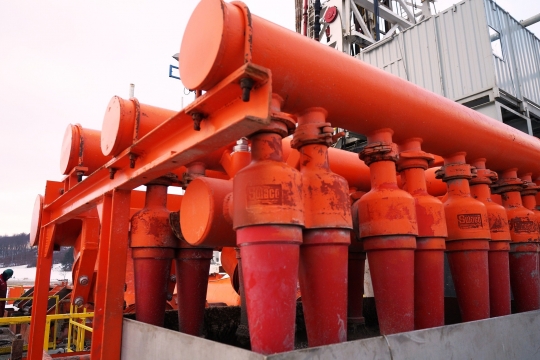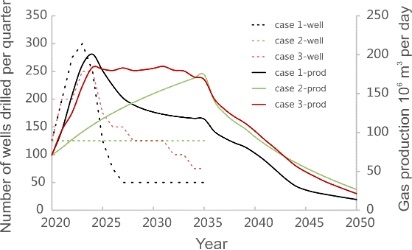|
Key Points
|
Developing the abundant shale gas in China is a potential means to address the country’s challenges in air pollution and carbon emissions. In this paper, we evaluate the role of shale gas in China’s future energy mix by forecasting the production potential of the most promising shale gas play—the Wufeng-Longmaxi Formation (WL). Key findings of the research include the following.
The WL Formation has the potential to produce 70 billion cubic meters (Bcm) of natural gas per year, equal to about 60% of China’s natural gas imports in 2018. In our recommended development plan (case 3), annual production of 61-68 Bcm can be maintained for 12 years (2024-2035) and a total of 1.3 Trillion cubic meters (Tcm) natural gas can be produced in 2020-2050 from the Wufeng-Longmaxi Formation.
Fig.1. Synthetic drilling and production profiles for different scenarios. “case 3-well” and “case 3-prod” are our recommended drilling and production profiles
Cost-benefit analysis shows that the upstream development cost in the Wufeng-Longmaxi Formation is similar to that in the Haynesville shale play in the United States, and the gross profit is more than 500 billion Chinese Yuan (CNY) in all three cases. Since the gas price is much higher in China, the profitability of shale gas development in WL is guaranteed. In addition, the environmental benefits of using shale gas to replace coal will further increase its advantages.
Creating a more open and competitive gas market, both upstream (producers) and downstream (distributors and retailers), is crucial. Allowing more companies to enter the gas industry and bid for gas fields, and fostering a mature market to provide services to gas producers, will leverage more resources in the public and private sectors, promote the diffusion of technologies, and greatly accelerate shale gas development.


